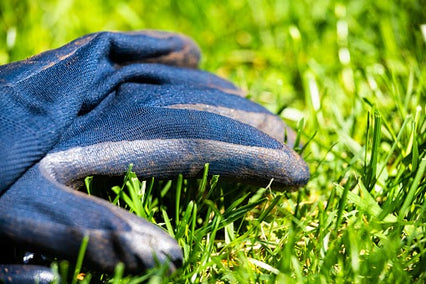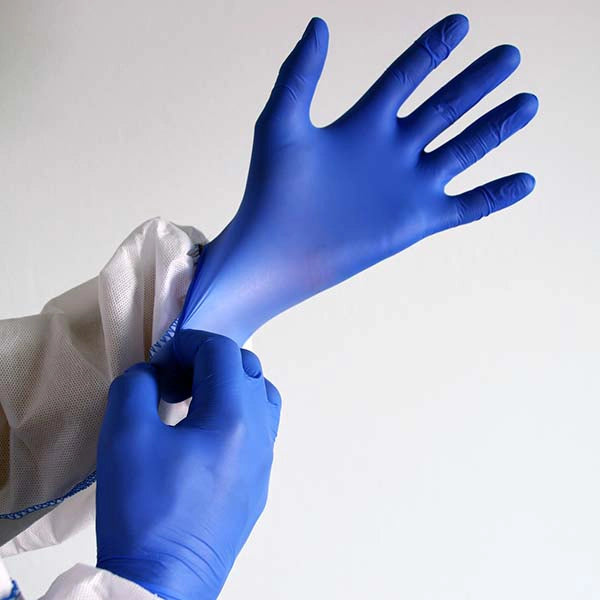Table of Contents
- Different Thickness Options for Latex Gloves
- Impact of Thickness on Comfort and Usage of Latex Gloves
- Thinner Gloves vs. Thicker Gloves
- How Glove Manufacturers Rate Glove Thickness
- How to Select the Right Thickness for Your Latex Gloves
- Disposable Latex Gloves You Can Trust
- Latex Glove Thickness: Frequently Asked Questions
Disposable gloves help protect you through thick and thin (see what we did there?) But the choice between thin gloves and thick gloves isn’t simply a question of cost or durability.
In reality, glove thickness makes a dramatic difference in how a pair of gloves performs.
Here’s a breakdown of things to keep in mind for glove thickness and a review of how to choose latex gloves based on thickness.
Different Thickness Options for Latex Gloves
Latex gloves are a popular choice in various industries due to their elasticity, comfort, and superior barrier protection. One of the key factors to consider when choosing latex gloves is their thickness. Different thickness options are available to cater to specific needs and applications, each offering unique benefits and levels of protection. Here’s a closer look at the various thickness options for latex gloves:
Thin Latex Gloves
Thin latex gloves typically have a thickness ranging from 2 to 4 mils (0.05 to 0.10 millimeters). These gloves provide excellent tactile sensitivity and dexterity, making them ideal for tasks that require precision and a high level of touch sensitivity. They are commonly used in medical examinations, laboratory work, and other environments where fine motor skills are essential. While thin latex gloves offer great flexibility and comfort, they are less durable and provide less protection against punctures and harsh chemicals compared to thicker gloves.
Medium-Thickness Latex Gloves
Medium-thickness latex gloves usually range from 5 to 7 mils (0.13 to 0.18 millimeters) in thickness. These gloves strike a balance between sensitivity and durability, offering enhanced protection while still allowing for a reasonable amount of dexterity. They are suitable for a variety of applications, including general medical use, food handling, and light industrial tasks. Medium-thickness gloves provide better resistance to punctures and chemicals than their thinner counterparts, making them a versatile choice for many professionals.
Thick Latex Gloves
Thick latex gloves have a thickness of 8 mils (0.20 millimeters) or more. These gloves are designed for heavy-duty applications where maximum protection is required. They are commonly used in environments with a high risk of exposure to hazardous chemicals, sharp objects, or infectious materials. Thick latex gloves offer superior durability and puncture resistance, making them ideal for use in industrial settings, emergency medical services, and heavy cleaning tasks. However, the increased thickness may reduce tactile sensitivity and flexibility, which can be a trade-off depending on the task at hand.
Impact of Thickness on Comfort and Usage of Latex Gloves
The thickness of latex gloves significantly impacts their flexibility, tactile sensation, and durability. Understanding these effects can help in selecting the right gloves for specific tasks and environments.
Flexibility
The thickness of latex gloves directly affects the ability to move fingers freely. Thinner gloves, generally between 2 to 4 mils, provide excellent flexibility, allowing for easy and natural finger movement. This makes them ideal for tasks requiring precision and dexterity, such as medical examinations and delicate procedures. Conversely, thicker gloves, usually 8 mils or more, offer less flexibility, which can restrict finger movement and make intricate tasks more challenging.
Sensation and Touch
Tactile feedback is another critical aspect influenced by the thickness of latex gloves. Thinner gloves allow for greater sensitivity and a more natural feel, enhancing the ability to detect textures and small objects. This heightened sensation and touch make thin gloves suitable for applications where fine motor skills are essential. On the other hand, thicker gloves reduce tactile sensitivity, which can impede the ability to perform tasks that require a high level of touch precision.
Resistance to Tearing and Punctures
Durability and protection are closely linked to the thickness of latex gloves. Thicker gloves offer superior resistance to tearing and punctures, providing enhanced protection against hazardous materials, sharp objects, and chemicals. This makes them ideal for high-risk environments, such as industrial settings and emergency medical services. In contrast, thinner gloves, while offering better flexibility and sensitivity, are more prone to damage and may not provide adequate protection in demanding situations.
Thinner Gloves vs. Thicker Gloves
What’s in a glove? A glove by any other thickness would work as well, right?
Not exactly.
When you consider glove thickness, you’re essentially making a choice between tactile sensitivity and durability. Think about it: the more material, the stronger the glove, but on the other hand, the more material to get in the way of the sensory receptors in your hands.
This is an important decision when choosing latex gloves, since latex is still a popular material for surgeons and medical professionals. Latex is known for retaining a high degree of tactile sensitivity, which is important in medical work where details make the difference (or even save someone’s life).
And one way or another, the more material, the less tactile sensitivity you have to work with, regardless of whether you choose latex or nitrile gloves.
In addition, more material generally means less dexterity. After all, there’s more material that has to stretch with you, and the thicker the glove, the harder the stretch. That’s good news if you need the glove to protect your hand against punctures, but not so much if you need your hands mobile.
How Glove Manufacturers Rate Glove Thickness
Glove thickness is given in mils, which is one one-thousandth of an inch. Ergo, a 10 mil glove is 0.010 inches thick. You’ll generally see gloves ranging from 1.5 mil at the low end to 8 or 10 mil at the high end.
However, glove thickness is not uniform across the whole glove.
Instead, glove manufacturers rate glove thicknesses based on the amount of material at the fingers and palm. In other words, when you choose a 4 mil glove, you’re choosing a glove that’s 4 mil thick at the fingertips and palms.
When you think about it, this is perfectly logical--your fingers are the area that does all the work, so you need the most tactile sensitivity in your fingers.
How to Select the Right Thickness for Your Latex Gloves
To put it simply, when you choose latex disposable gloves, you choose their thickness based on the task at hand. Here’s a quick breakdown:
- 1.5 mil to 2.5 mil: food service workers
- 2 mil to 4 mil: dentists
- 3 mil to 5 mil: healthcare workers
- 5 mil to 7 mil and up: industrial workers
Depending on the healthcare work that you do, your sweet spot is generally between 2 mil and 5 mil. Again, your choice of thickness is entirely based on whether you need durability or tactile sensitivity, which is wholly determined by the task at hand.
Disposable Latex Gloves You Can Trust
We know that you turn to latex gloves to do important work--work that supports your whole community. And we provide high-quality latex gloves you can count on to get the job done right every single time.
Find the perfect fit for you and add your gloves to your cart today. Or, if you’re ordering latex gloves in bulk for your whole organization, our expert customer service team would be happy to set up a wholesale order for you.
Latex Glove Thickness: Frequently Asked Questions
How thick should latex gloves be?
The appropriate thickness for latex gloves depends on their intended use. For tasks requiring high dexterity and tactile sensitivity, such as medical examinations or laboratory work, gloves with a thickness of 2 to 4 mils are ideal. For tasks that require a balance between protection and flexibility, such as food handling or light industrial work, gloves with a thickness of 5 to 7 mils are suitable. For heavy-duty tasks involving exposure to harsh chemicals or sharp objects, gloves with a thickness of 8 mils or more provide the necessary durability and protection.
How thick are mechanics latex gloves?
Mechanics typically use latex gloves with a thickness ranging from 5 to 7 mils. This thickness provides a good balance between protection and tactile sensitivity, allowing mechanics to handle tools and small parts efficiently while offering adequate protection against oils, greases, and minor abrasions.
What is the best thickness for automotive gloves?
For automotive work, gloves with a thickness of 5 to 7 mils are generally recommended. This thickness offers sufficient protection against common automotive fluids, chemicals, and abrasions while maintaining enough flexibility and dexterity to handle intricate tasks and tools. In situations requiring more robust protection, such as working with heavy machinery or sharp components, thicker gloves (8 mils or more) might be preferable.
What is the main latex thickness?
The most common thickness for general-purpose latex gloves falls within the range of 5 to 7 mils. This medium thickness strikes a balance between providing adequate protection and maintaining comfort and dexterity, making it suitable for a wide variety of applications including medical, food handling, and light industrial tasks.






